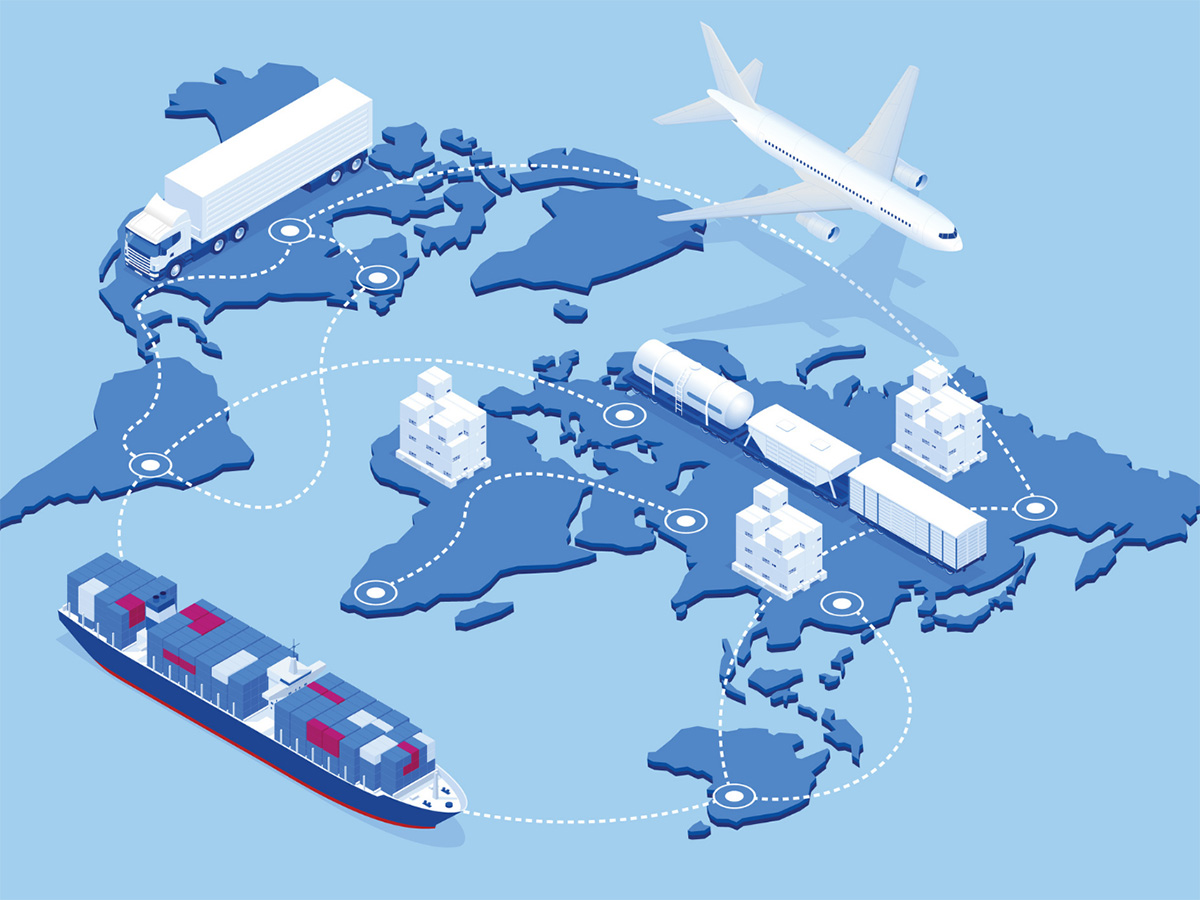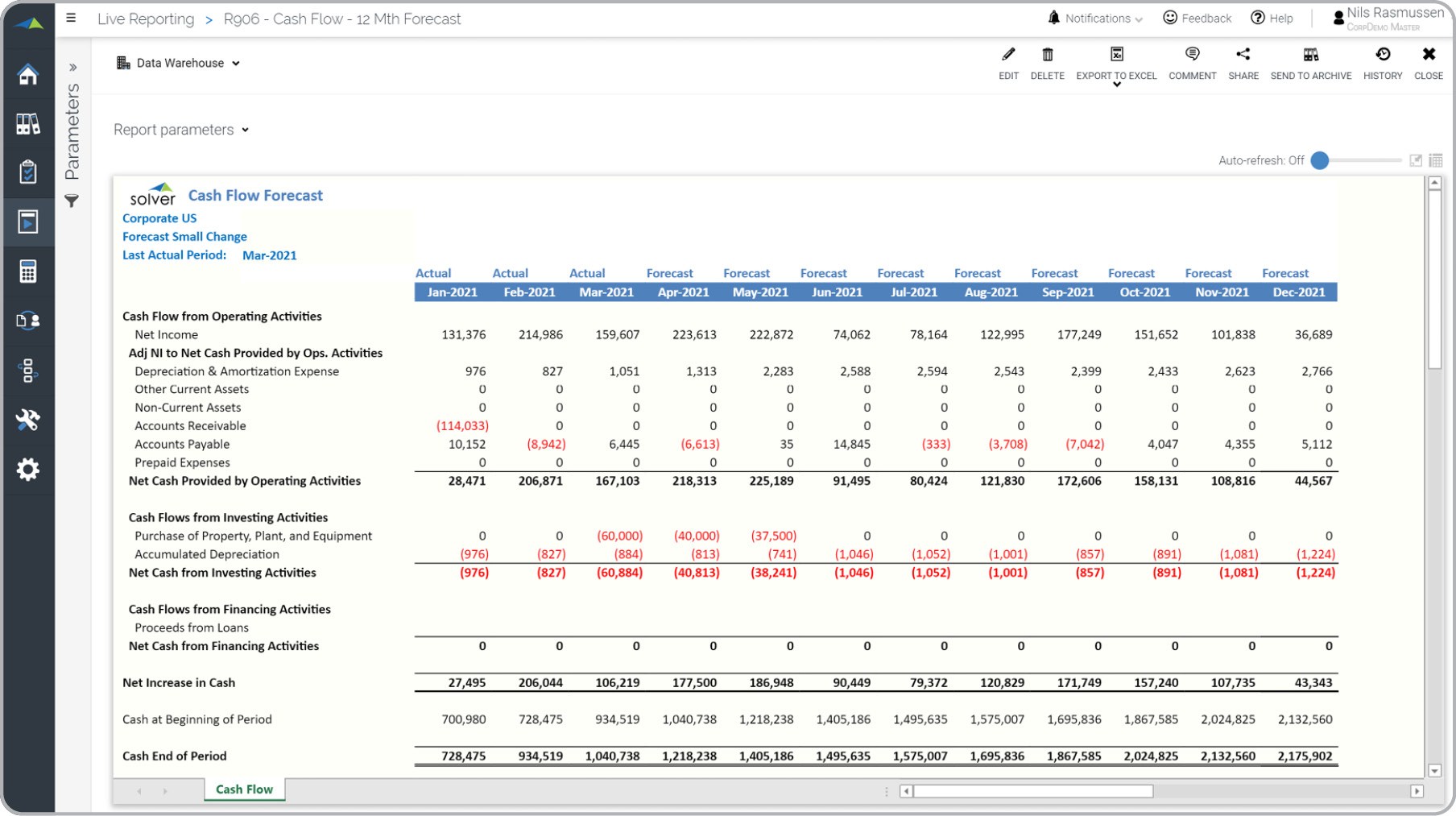

Finance
What Is A Software Supply Chain?
Published: October 19, 2023
Discover the importance of software supply chain in finance industry. Learn how it influences financial processes and enhances operational efficiency.
(Many of the links in this article redirect to a specific reviewed product. Your purchase of these products through affiliate links helps to generate commission for LiveWell, at no extra cost. Learn more)
Table of Contents
Introduction
Welcome to the world of software supply chains, where the intricate web of processes and stakeholders converge to bring you the digital products and services you rely on every day. In this increasingly interconnected world, understanding the concept of a software supply chain is crucial for businesses and individuals alike.
Simply put, a software supply chain refers to the entire lifecycle of software development, from the initial idea and design stages all the way to deployment and maintenance. Just like a traditional supply chain that involves the production and distribution of physical goods, a software supply chain involves various entities working together to deliver software products to end users.
Whether you’re a software developer, a technology enthusiast, or simply someone using software on a daily basis, having a grasp of how software supply chains operate can help you better understand the complexities involved in bringing software to market.
In this article, we will delve into the definition of a software supply chain, discuss its importance, explore the components that make up a software supply chain, highlight the challenges faced in managing software supply chains, and provide best practices for effective management.
Definition of a Software Supply Chain
A software supply chain is a complex network of interconnected processes, activities, and stakeholders involved in the development, delivery, and maintenance of software products. It encompasses the entire lifecycle of software, from the ideation and design phases to the release and post-release phases.
At its core, a software supply chain focuses on the efficient flow of software artifacts, such as code, libraries, documentation, and dependencies, from one stage to another. These artifacts are often produced by different teams, organizations, or even third-party suppliers, who collaborate to create a cohesive end product.
The software supply chain can be visualized as a series of interconnected links, where each link represents a specific stage or activity in the software development process. These stages typically include requirements gathering, design, coding, testing, deployment, and maintenance.
One crucial aspect of a software supply chain is the management of dependencies. Software often relies on various external components such as libraries, frameworks, and APIs. These dependencies may have their own supply chains, adding another layer of complexity to the overall software supply chain.
Additionally, the software supply chain also involves the management of risk, security, and compliance. Since software is often delivered to end users over the internet or through distribution channels, ensuring the integrity, authenticity, and safety of software components is paramount.
By understanding the intricacies of the software supply chain, businesses can optimize their development processes, improve software quality, reduce time-to-market, minimize risks, and ultimately deliver better products to their customers.
Importance of Software Supply Chain
The software supply chain plays a vital role in today’s fast-paced and interconnected world. Here are some key reasons why understanding and effectively managing the software supply chain is crucial:
Efficiency: A well-managed software supply chain can streamline the development process, enhance collaboration between teams and stakeholders, and optimize the utilization of resources. By maximizing efficiency, organizations can deliver software products faster and at a lower cost.
Quality Assurance: The software supply chain enables organizations to implement rigorous testing, quality assurance, and quality control measures at each stage of the development process. This ensures that software products meet the highest standards of performance, functionality, and reliability.
Risk Management: Managing the software supply chain involves identifying and mitigating potential risks. This includes addressing security vulnerabilities, managing dependencies, and ensuring the compliance of software products with relevant regulations and standards. By proactively managing risks, organizations can minimize the chances of software failures, security breaches, and legal liabilities.
Innovation: The software supply chain facilitates the integration of cutting-edge technologies, tools, and frameworks into software products. This enables organizations to stay at the forefront of innovation, deliver unique and competitive offerings, and adapt to evolving market trends and customer preferences.
Cross-Functional Collaboration: The software supply chain involves collaboration between different teams and stakeholders, such as developers, designers, testers, project managers, and end users. Effective collaboration enhances communication, fosters knowledge sharing, and encourages cross-functional problem-solving, leading to better software products and improved customer satisfaction.
Customer Satisfaction: A well-managed software supply chain ensures that software products meet customer expectations and deliver value. This includes factors such as user-friendly interfaces, robust functionality, regular updates, and timely bug fixes. Satisfied customers are more likely to remain loyal, promote the product through word-of-mouth, and contribute to the organization’s long-term success.
Competitive Advantage: A streamlined and efficient software supply chain can give organizations a competitive edge in the market. By delivering high-quality software products faster, organizations can stay ahead of the competition, attract new customers, and retain existing ones.
Overall, understanding and effectively managing the software supply chain is essential for organizations to succeed in the dynamic and rapidly evolving software industry. It enables them to deliver top-notch software products that meet customer needs, mitigate risks, drive innovation, and gain a competitive advantage.
Components of a Software Supply Chain
The software supply chain is made up of several interconnected components that work together to deliver software products. Each component plays a crucial role in the overall process. Here are the key components of a software supply chain:
- Requirements Gathering: This initial stage involves gathering and documenting the functional and non-functional requirements of the software product. It includes understanding the needs of the end users, defining the scope of the project, and setting clear objectives.
- Design: In the design phase, software architects and designers create a blueprint for the software product. This includes defining the software’s structure, interfaces, modules, and data flow. The design phase ensures that the software is scalable, maintainable, and meets the specified requirements.
- Coding: The coding phase involves writing the actual code that implements the design. Development teams use programming languages and frameworks to transform the design into functional software. This phase also includes tasks such as code review, unit testing, and version control.
- Testing: The testing phase focuses on identifying and fixing bugs, as well as verifying that the software meets the defined requirements. It includes various types of testing, such as unit testing, integration testing, system testing, and user acceptance testing. Testing ensures the software’s functionality, performance, and reliability.
- Deployment: The deployment phase involves packaging the software product and making it available to end users. This can include tasks such as creating installers, configuring servers, and setting up deployment environments. The deployment phase ensures that the software can be efficiently installed, updated, and accessed by users.
- Maintenance: Once the software is deployed, the maintenance phase kicks in. This involves addressing bugs, implementing updates and enhancements, and providing technical support to end users. Maintenance ensures the continued functionality, stability, and security of the software product over time.
In addition to these core components, there are other essential aspects to consider in the software supply chain. These include:
- Project Management: Effective project management is crucial in overseeing the entire software supply chain. It involves planning, organizing, and coordinating resources, schedules, and deliverables, ensuring that the project stays on track.
- Release Management: Release management focuses on managing the release and distribution of software versions. It includes tasks such as version control, release planning, and release documentation. Effective release management ensures smooth and controlled software deployments.
- Supplier Management: Many software products rely on third-party suppliers for components such as libraries, APIs, or services. Supplier management involves selecting, onboarding, and managing these suppliers to ensure the quality and reliability of the software supply chain.
- Security and Compliance: Addressing security vulnerabilities and ensuring compliance with relevant regulations and standards is paramount in the software supply chain. This includes tasks such as vulnerability scanning, code reviews, and data protection measures.
- Documentation: Proper documentation is essential for a well-functioning software supply chain. This includes documenting requirements, design, code, test plans, and user manuals. Documentation enables effective communication, knowledge sharing, and future maintenance.
By understanding and effectively managing these components, organizations can ensure the smooth flow of software development, improve product quality, and ultimately deliver exceptional software products to their customers.
Challenges in Software Supply Chain Management
Managing a software supply chain comes with its fair share of challenges. These challenges can arise from various factors, including the complexity of modern software development practices and the interconnected nature of digital ecosystems. Here are some common challenges in software supply chain management:
- Dependency Management: As software products often rely on external libraries, frameworks, and APIs, managing dependencies can be challenging. Keeping track of these dependencies, ensuring compatibility, and managing updates can become complex, especially when multiple dependencies are involved.
- Risk Management: Managing risks, such as security vulnerabilities or compliance issues, is crucial in the software supply chain. Identifying potential risks, implementing risk mitigation strategies, and staying updated on emerging threats pose constant challenges for organizations.
- Quality Assurance: Ensuring the quality of software products throughout the supply chain can be a challenge. Implementing comprehensive testing processes, conducting thorough code reviews, and maintaining a high level of quality control require careful planning and coordination.
- Time-to-Market: The pressure to release software products quickly can pose challenges in managing the supply chain. Balancing speed with quality and coordination among various teams can result in time constraints and potential compromises if not managed effectively.
- Communication and Collaboration: Coordinating and communicating across different teams, departments, and even organizations can be challenging. Efficient collaboration and effective communication are essential for a smooth software supply chain, and any breakdowns can lead to delays, misunderstandings, and reduced efficiency.
- Supply Chain Complexity: Software supply chains can become increasingly complex as they involve multiple stages, teams, suppliers, and dependencies. These complexities can lead to increased management overhead, making it challenging to ensure seamless coordination and efficient workflow across the entire supply chain.
- Change Management: The software supply chain is subject to frequent changes, including updates, bug fixes, and new feature releases. Managing these changes while minimizing disruptions to ongoing processes and ensuring smooth transitions can be a daunting task.
- Compliance and Regulatory Requirements: Adhering to relevant regulations and standards adds another layer of complexity to software supply chain management. Keeping up with regulatory changes, ensuring compliance, and implementing necessary controls can be both challenging and time-consuming.
Despite these challenges, organizations can overcome them by implementing effective strategies, leveraging advanced technologies, and fostering a culture of collaboration and continuous improvement. By proactively addressing the challenges, organizations can streamline their software supply chains and deliver high-quality products efficiently.
Best Practices for Managing Software Supply Chain
Effectively managing a software supply chain requires careful planning, coordination, and adherence to best practices. Here are some key best practices to consider:
- Establish Strong Supplier Relationships: Build and nurture relationships with reliable suppliers and third-party vendors. Regularly communicate, set clear expectations, and establish agreements to ensure the quality and timely delivery of components and services.
- Implement Robust Dependency Management: Maintain a centralized system for tracking and managing dependencies. Regularly update and patch dependencies, conduct compatibility testing, and have a clear process for evaluating and approving new dependencies.
- Adopt Agile Development Methodologies: Agile methodologies, such as Scrum or Kanban, promote iterative development, close collaboration, and frequent releases. This enables faster feedback, efficient task allocation, and better adaptation to changing requirements throughout the software supply chain.
- Automate Testing and Quality Assurance: Implement automated testing frameworks, continuous integration, and delivery pipelines to enable frequent and efficient testing. This reduces the risk of human error, speeds up the testing process, and ensures a high level of software quality.
- Prioritize Security and Compliance: Develop a robust security framework that includes vulnerability scanning, regular security assessments, and employee training. Establish and adhere to compliance programs to ensure regulatory requirements are met throughout the software supply chain.
- Implement Change Management Strategies: Have well-defined change management processes to handle updates, bug fixes, and feature releases. This includes proper documentation, testing practices, and communication to minimize disruptions and ensure smooth transitions within the supply chain.
- Promote Effective Communication: Foster a culture of communication and collaboration across teams, departments, and organizations involved in the software supply chain. Regularly engage in meetings, use communication tools, and encourage open dialogue to improve coordination and minimize misunderstandings.
- Establish Continuous Improvement Practices: Encourage a mindset of continuous improvement throughout the software supply chain. Regularly assess processes, gather feedback from users and stakeholders, and implement improvements to enhance efficiency, quality, and customer satisfaction.
- Invest in Talent Development: Provide training and professional development opportunities for individuals involved in the software supply chain. This ensures that team members have the necessary skills and knowledge to perform their roles effectively and adapt to evolving technologies and best practices.
- Monitor and Measure Key Metrics: Establish performance metrics to track the effectiveness and efficiency of the software supply chain. This includes metrics such as cycle time, defect rate, customer satisfaction, and adherence to delivery schedules. Regularly review and analyze these metrics to identify areas for improvement.
By implementing these best practices, organizations can enhance the management of their software supply chains, achieve greater efficiency, improve software quality, and ultimately deliver successful software products to their customers.
Conclusion
The software supply chain is a complex and interconnected system that spans the entire lifecycle of software development. Understanding and effectively managing the software supply chain is crucial for organizations in today’s digital landscape.
In this article, we explored the definition of a software supply chain and highlighted its importance in delivering high-quality software products efficiently. We discussed the various components that make up a software supply chain, including requirements gathering, design, coding, testing, deployment, and maintenance.
We also addressed the challenges that organizations face in managing software supply chains, such as dependency management, risk management, and ensuring compliance with regulatory requirements. However, with the implementation of best practices, organizations can navigate these challenges and optimize their software supply chains.
Some of the best practices for managing a software supply chain include establishing strong supplier relationships, implementing robust dependency management, adopting agile development methodologies, and prioritizing security and compliance. Effective communication, change management strategies, continuous improvement practices, talent development, and monitoring key metrics are also essential for successful supply chain management.
By embracing these best practices, organizations can streamline their software supply chains, improve efficiency, enhance software quality, and ultimately deliver exceptional products to their customers. In today’s competitive market, organizations that can effectively manage their software supply chains will gain a competitive advantage and achieve long-term success.
In conclusion, the software supply chain is a critical component of the software development process. Understanding its intricacies and implementing best practices is essential for organizations to thrive in the ever-evolving digital landscape and deliver innovative and reliable software products.














